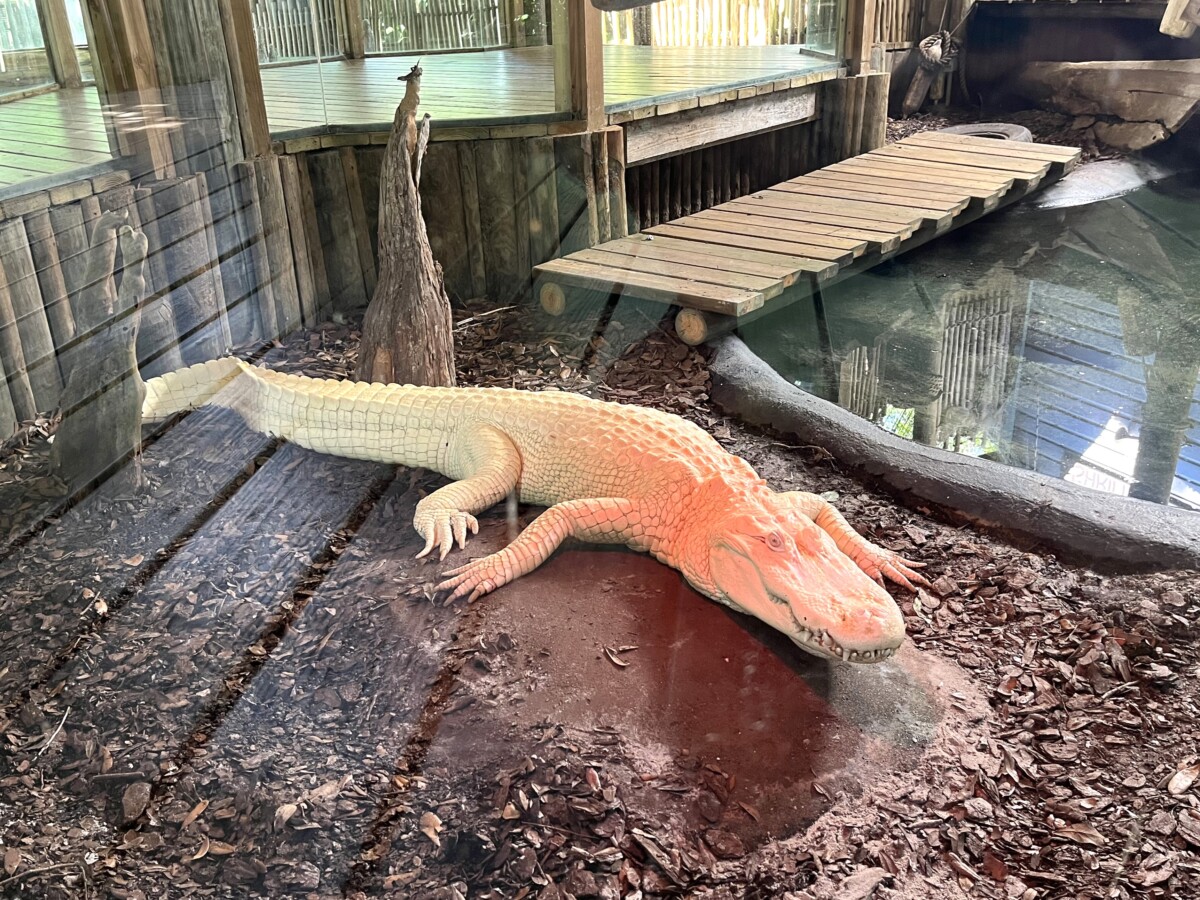When asked about favorite tourist spots in St. Augustine, many Flagler College parents recommended the St. Augustine Alligator Farm and Zoological Park. Since we’d already explored the Castillo and Ximenez-Fatio House, Thing 1 and I visited this landmark on a hot September day.
Located across the Bridge of Lions on Anastasia Island, the alligator farm began in 1893 reportedly by George Reddington and Felix Fire. George Reddington drove the first automobile in St. Augustine and also owned the Gonzales-Alvarez House (aka the Oldest House Museum) before selling it to the St. Augustine Historical Society in 1918.
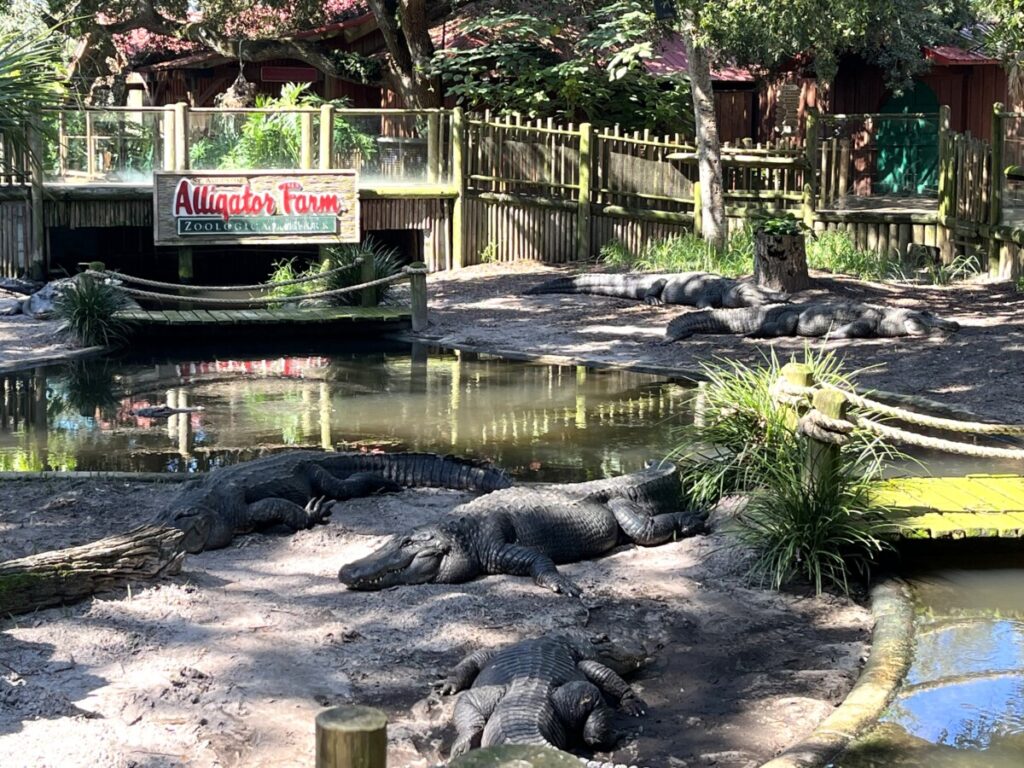
Early St. Augustine Tourism & History
Tourist spots cropped up in St. Augustine around the same time Henry Flagler brought the railroad and developed posh hotels in the area. Dr. Vedder’s Museum and Menagerie was one of the first “zoos” with wild cats, alligators, and other animals. A rattlesnake got loose and neighbors complained. Vedder then focused more on natural history highlighting prehistoric artifacts from Native American Indians and the Spanish period until his death in 1899.
Another resident, John Whitney, cashed in on the tourist boom when he built an observation deck above the springs on his property. Touting it as Whitney’s Fountain of Youth, he charged tourists a fee to drink the water. In the 1890s, his son Everett Whitney opened the Burning Spring Museum on Anastasia Island, accessible by train. Visitors flocked to watch the water, with sulfuric properties, burn when lit by gasoline.
With these popular attractions, it’s no wonder the idea came up for a nearby alligator pen to entertain tourists waiting on the train. Some believe Reddington and Fire started the farm. Other historians, including Beth R. Bowen, believe Everett Whitney originally started it and sold it to Reddington and Fire. Either way, the tourist spot became well known as “the world’s largest alligator farm.”
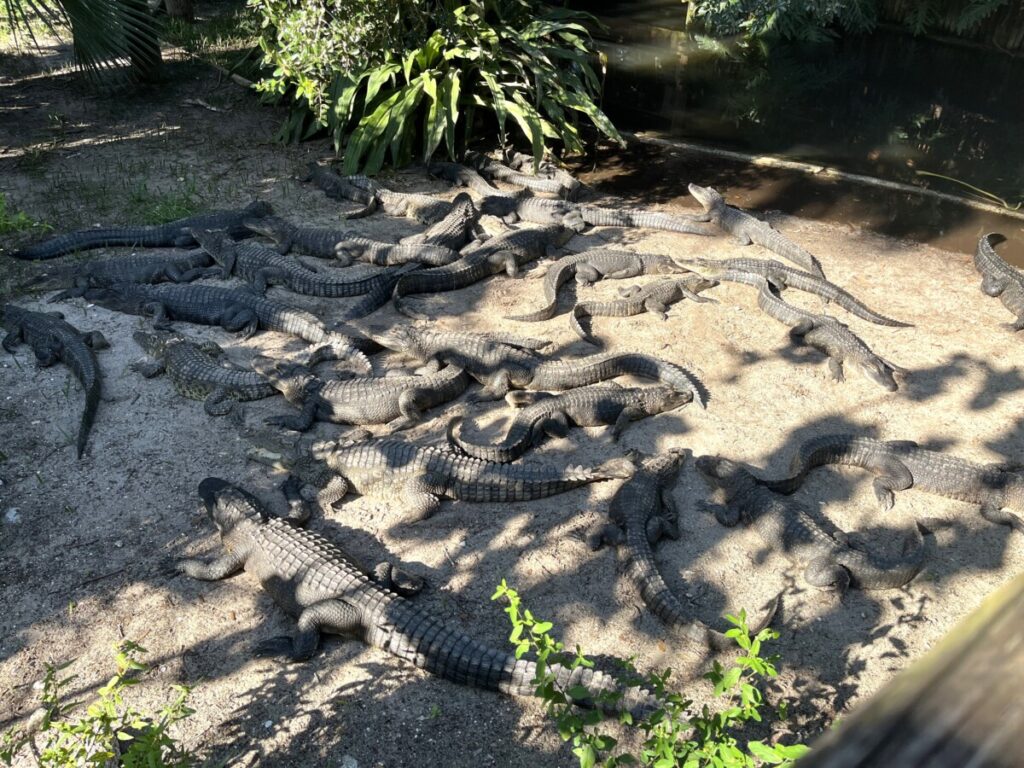
Over the years Reddington and Fire added more reptiles and for a short time, ostriches. In 1937, W.I. Drysdale and F. Charles Usina purchased the 7-acre farm (relocated two miles south of the original spot after a fire) and continued adding animals, exhibits, and other improvements. Today, Drysdale’s son David runs the 7-acre property with over 800 alligators and every species of crocodilians in existence. In fact, the alligator farm led efforts in preventing the extinction of the species in the 1960s and 1970s and many university scientists come here for research opportunities.
The Alligators
At the entrance, we picked up a map and toured the facility. Cajun music came from one area so we passed the alligator hatchlings and came up to a covered area featuring an Albino Alligator. Hailing from Louisiana, this rare reptile usually doesn’t survive in the wild long because they can’t camouflage themselves and the sun’s rays damage their pigment-less skin. Scientists believe only 100-200 albino alligators live in the world today.
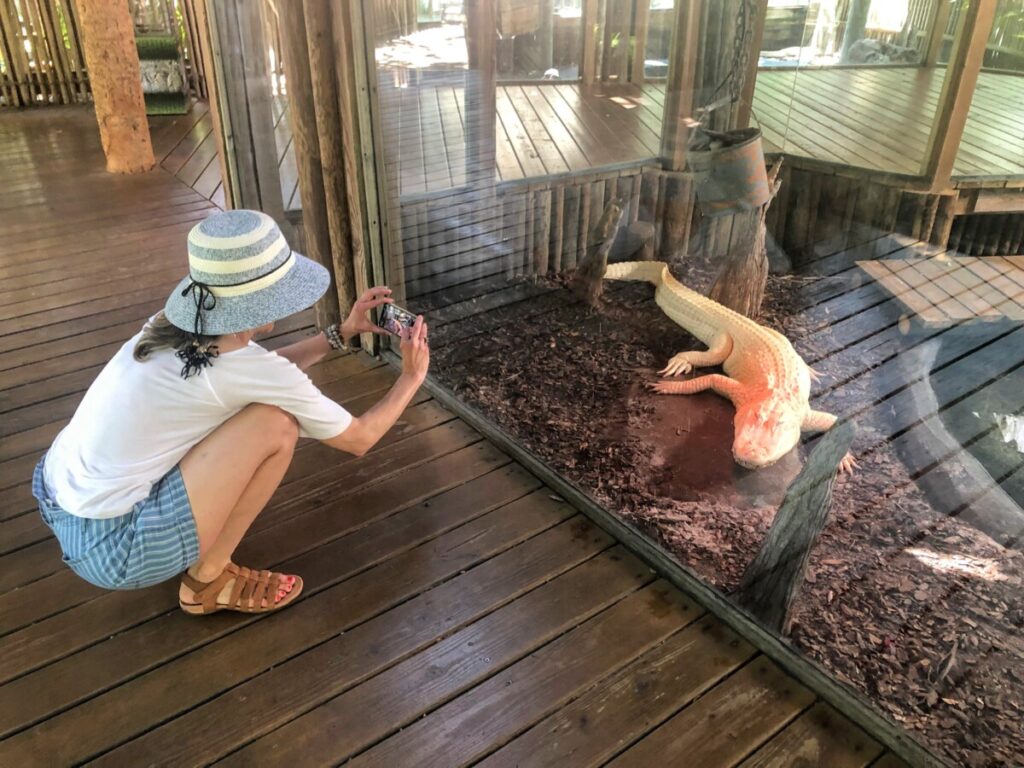
Surprisingly, the alligator farm boasts a large number of birds and non-reptile animals. We stopped and looked at a brightly-colored toucan, a macaw, and a cockatoo on our way to the southern cassowary exhibit. Known as the most dangerous bird, this flightless, road-runner-looking bird can run 30 miles per hour and jump over five feet. The cassowary didn’t cooperate with us and hid behind the tall grass in his shelter. Nearby, we visited the komodo dragon and watched lemurs climb a tree.
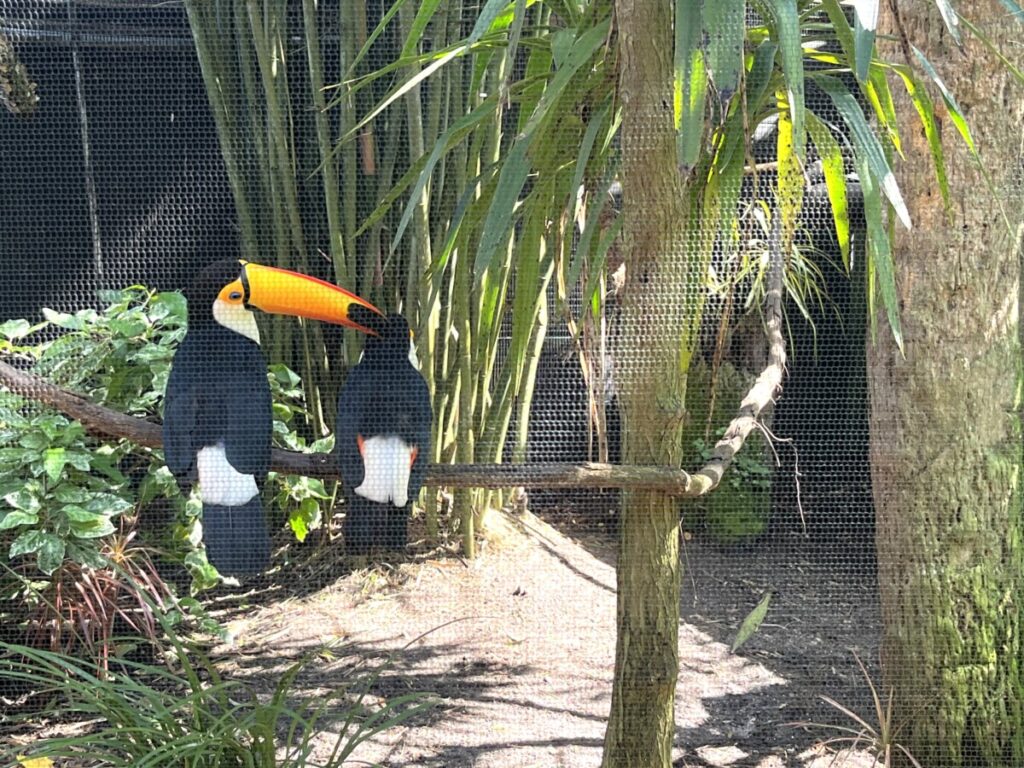
Native Swamp and Rookery
The best alligator viewing is definitely at the Swamp and Rookery on the northern edge of the property. On the long boardwalks, we crossed a swampy body of water with lots of tree logs. On second look, we realized these weren’t logs at all, but tons of alligators! We had fun watching a “traffic jam” between several of them under the bridge. Somehow they worked it out. Seeing the gators in their natural habitat, I realized how easily they camouflage their bodies.
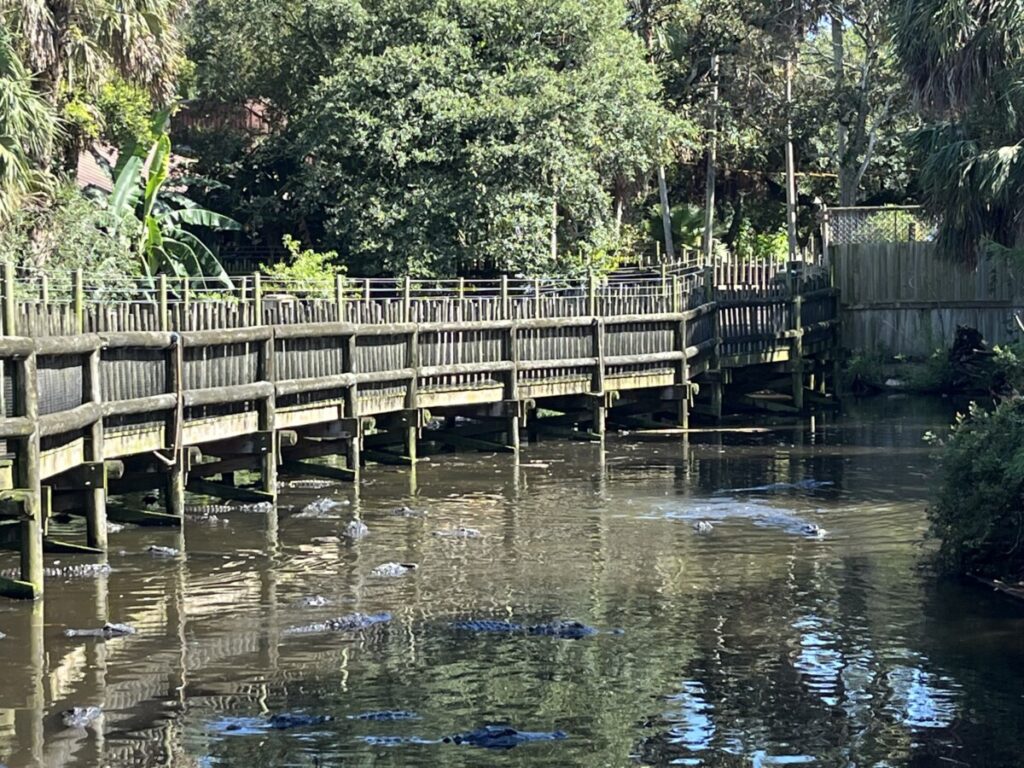
Oblivious to the alligators, spoonbills, herons, storks, and other wild birds flew around the area. In conjunction with the Florida Audobon Society, the rookery provides a safe place away from raccoons for these birds to lay eggs. Because the boardwalks offer close encounters with the birds and their nests, the rookery is a stop on the Florida Birding Trail.
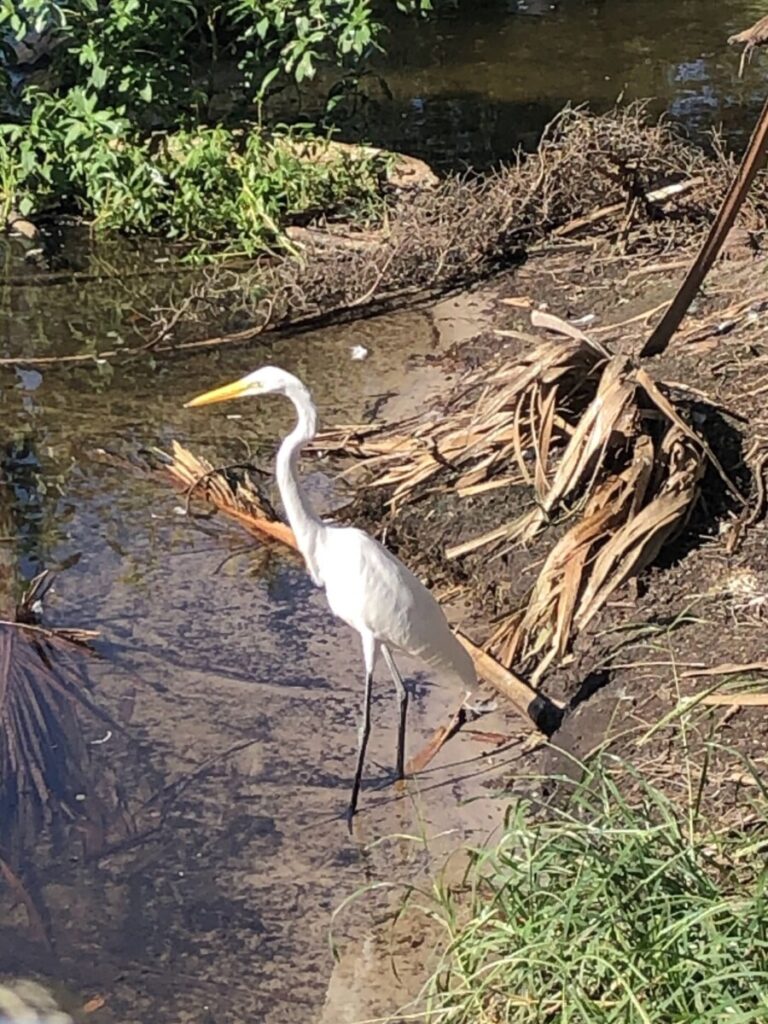
The birds come and go at will. The alligator farm doesn’t feed them or keep them in captivity.
Maximo and Gomek
The largest inhabitant of the alligator farm is Maximo, a 15-foot-long, 1,200-pound saltwater crocodile. Although his enclosure also features an underwater viewing area, he didn’t pose for us. Instead I have a good picture of his tail.
However, the honor of the largest all-time reptile at the farm belongs to Gomek, also a “saltie” crocodile, from Papua New Guinea. Measuring 18 feet, his taxidermied body remains on display in the Gomek Forever building. Other exhibits include photos of Gomek and his journey to the farm where he lived from 1989 (after the zoo gained accreditation from the American Association of Zoos and Aquariums) to 1997. At the time, he was the largest reptile in captivity not just at the alligator farm, but in the United States.
Live Shows
Since the farm’s focus is on education, they offer many wildlife shows and feedings each day. We caught the Realm of the Alligator show at 4pm. During the show, the animal trainer introduced us to several reptiles and fed them large pieces of meat. You couldn’t have paid me money to stand in that enclosure full of American alligators!
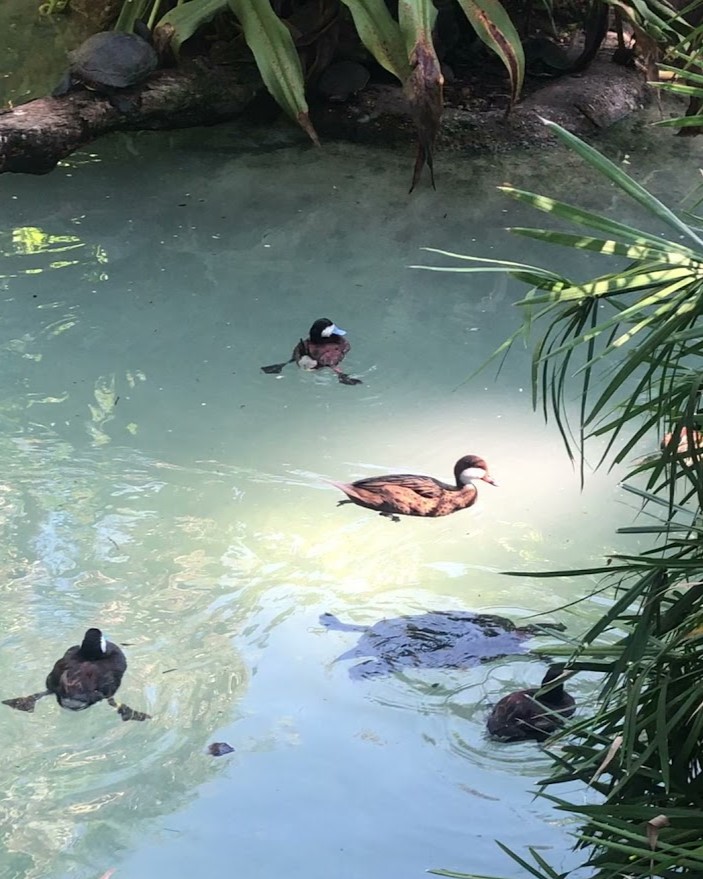
But before we got to the alligator lagoon, we stopped by to see Galapagos tortoises and a pair of two-toed sloths. Stopping at the Americas Waterfowl Pond, Thing 1 and I enjoyed watching the North American Wood Ducks with blue heads as we needed a quick break from all the slithery reptiles.
Differences between Gators and Crocs
Do you know the difference between alligators and crocodiles? They belong to the same order (Crocodilia) but in different families. Alligators have a broader snout, webbed feet, and darker green or black skin. They can only live in freshwater. On the other hand, crocodiles have a pointy snout and lighter (usually olive or tan) skin. When they close their jaw, the bottom teeth usually still show. Crocodiles prefer warmer climates and salt water.
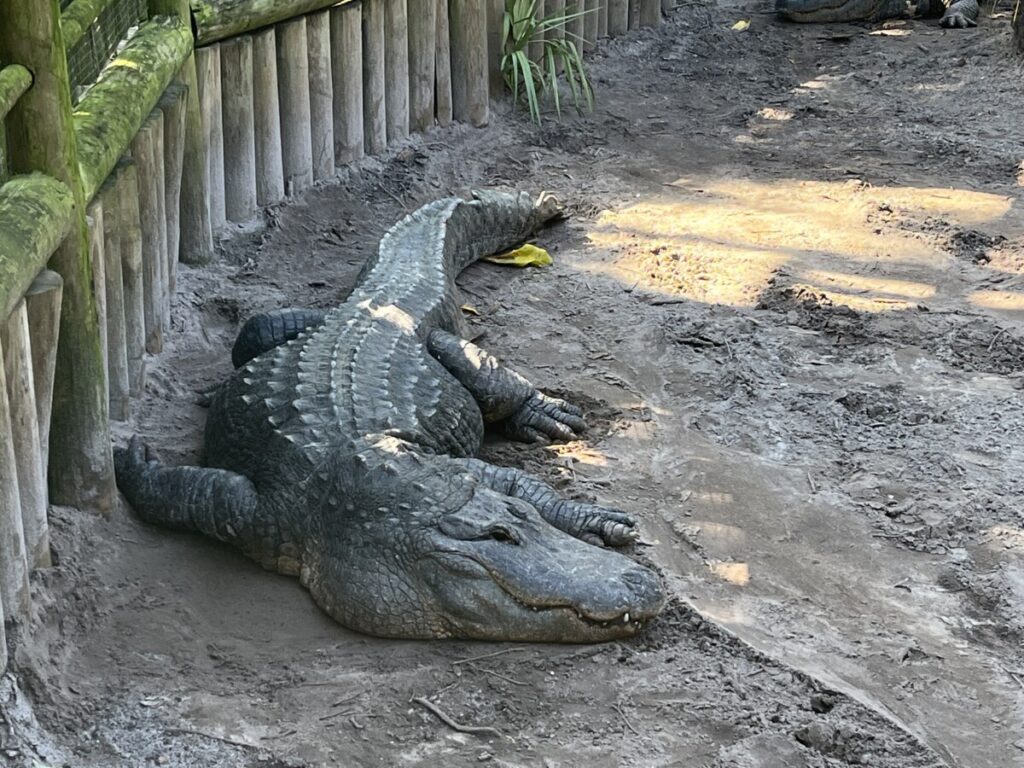
While both are dangerous, crocodiles are more aggressive and have a stronger bite. And, because they’re typically up to three feet larger than alligators, they’ll always win in a showdown between the two. And don’t be fooled by either of these lazy-looking creatures. Both run very fast – the alligator averages 30 mph while the crocodile averages 20 mph.
Land of Crocodiles
While alligators inhabit the coastal areas of the Southeastern United States from Texas to North Carolina, crocodiles are harder to find. The American crocodile lives in Central and South America but can be found in the southern areas of Florida. In honor of its 100th birthday and to increase crocodile awareness, the St. Augustine Alligator Farm opened the Land of Crocodiles exhibit in 1993. It remains the only zoo to feature every known crocodile species.
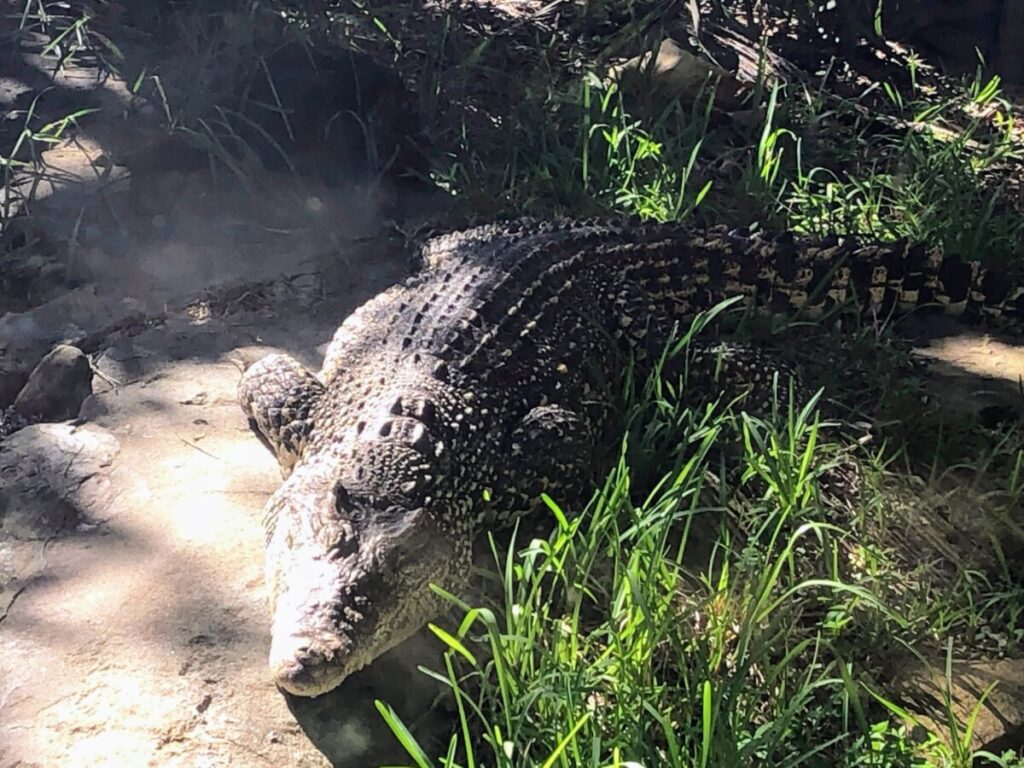
For me, crocodiles and alligators all looked the same. Now that I learned crocodiles boasted pointy snouts, I was amazed to see the differences between the 24 different species of crocodiles. Let’s just say we saw a lot of pointy teeth and I was thankful for the glass enclosures, despite casting reflections on all our pictures.
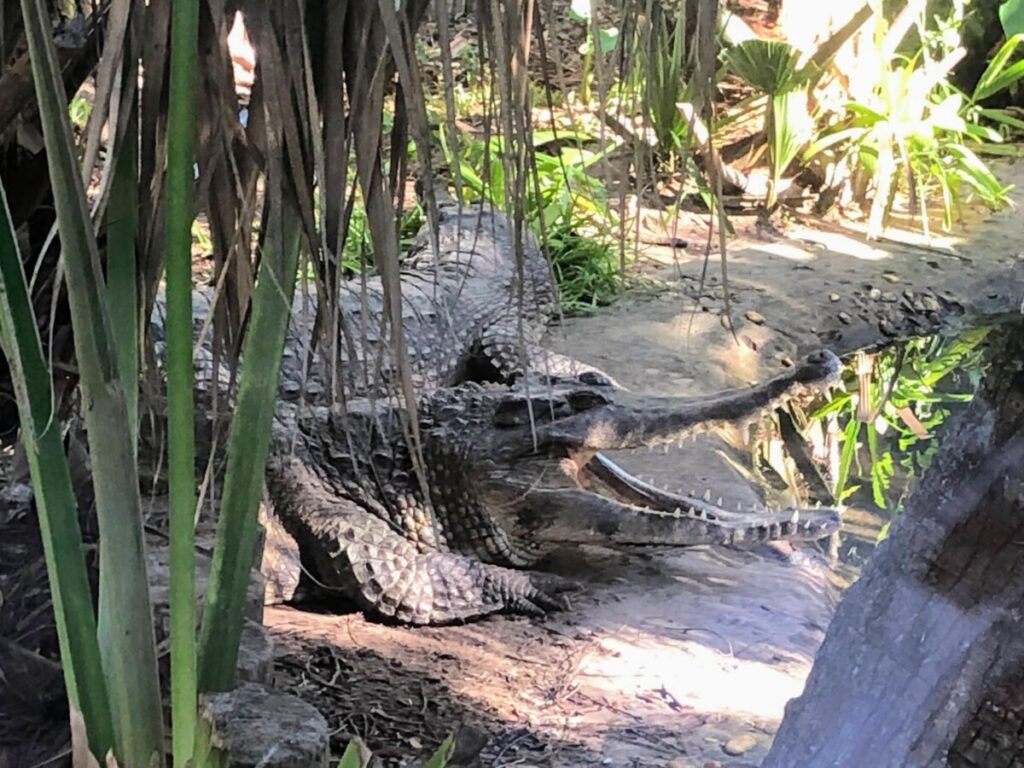
For those seeking a real thrill, they can try the obstacle course and zipline that runs over the Land of Crocodiles. Other activities for kids include a climbing wall and a fossil dig.
Oasis of the Nile
Before leaving, we explored the Oasis of the Nile section. The large exhibit, which opened in 2018, features Egyptian music, artifacts, and a large pool with Nile crocodiles. Considered the most aggressive toward humans, these crocs mean business! Shortly after the exhibit opened, a fully-clothed man broke into the farm and jumped into the pool with the Nile crocodiles. He lost most of his clothing and suffered bites before escaping and getting arrested.
Conclusion
The St. Augustine Alligator Farm and Zoological Park is more than just a place to see alligators. It offers a comprehensive array of crocodiles, as well as other exotic birds and animals. While I didn’t spend much time inside the reptile house, guests can view rat snakes, king cobras, and other snakes. While mostly outdoors, the farm provides lots of trees for shade. The average visit lasts about two hours.
For more information, click the website here.
